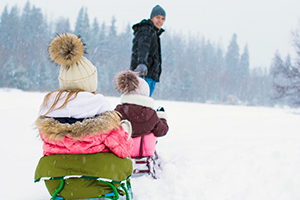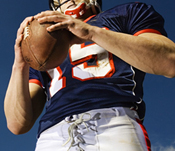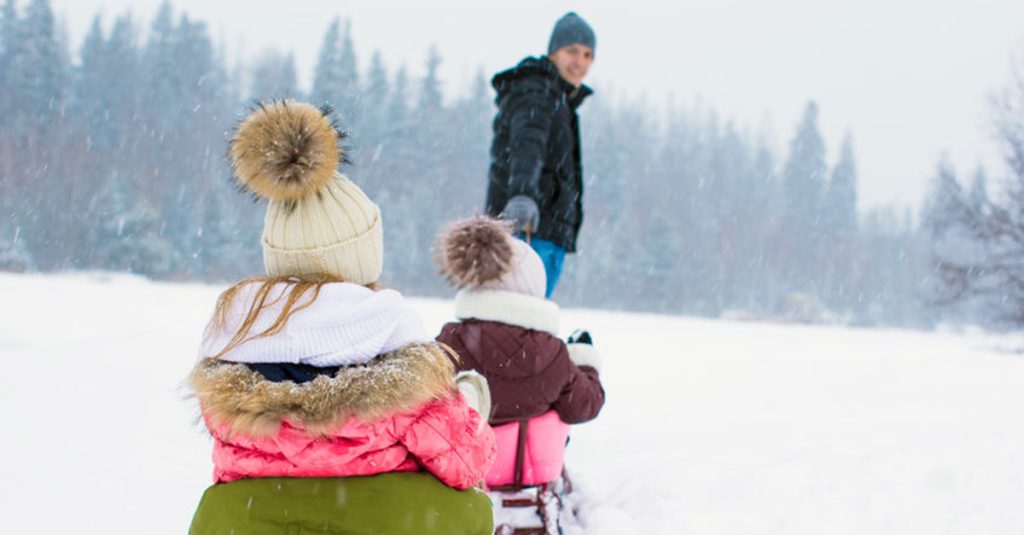Posts Tagged ‘“Boston head injury lawyers”’
Tips for Sledding Safely in Massachusetts
 February has delivered perfect sledding weather for Massachusetts families. But before you head out with your children, remember the risk for injuries can rise during outdoor winter activities. Sledding, skating and skiing push our bodies beyond our daily routines as we face the elements of cold weather, snow and ice.
February has delivered perfect sledding weather for Massachusetts families. But before you head out with your children, remember the risk for injuries can rise during outdoor winter activities. Sledding, skating and skiing push our bodies beyond our daily routines as we face the elements of cold weather, snow and ice.
More than 20,000 children are treated for sledding injuries on average each year, according to the National Safety Council. Children can be injured when a sled hits a stationary object, in collisions with other sledders or by flipping or falling off their sled. Sledding accidents such as these can result in broken bones, lacerations, bruises, concussions, head injuries or more serious injuries.
You can protect your children by sledding with them and teaching them safety fundamentals by example. Please read our tips and enjoy a fun and safe sledding experience:
Choose a Safe Sledding Spot
After asking friends for suggestions and searching online, visit a few local sledding hills on your own, without your children. Walk to the top of the sledding area. Check your cell phone service from that point. Sledding hills may look similar, but they are not all equal. Choose a sledding area that is free from trees or rocks that could cause your child injury. Avoid hills that are too close to streets and parking lots.
Look for sledding hills that are snow-covered, not ice-covered.
A walkthrough is particularly useful for parents of young children, who are most vulnerable to the cold. Time your walk and compare this to your child’s regular play time in the snow and their physical capabilities. Think about whether your child can the hill – both the steepness for sledding and walking up the hill.
Sled During The Day. There is less visibility and colder temperatures at night. Your best approach is to sled during the day, when the sun is out.
Sled With Your Children and Supervise.
Sled as a Family. Plan at least one sledding day for your family each year. Besides being a lot of fun, this will create special memories. Sledding is also great way to get some fresh air and exercise for children, which we all need during the winter months.
Sled with Your Child and Their Friends. If your child or teenager wants to sled with friends, go along and watch. Enjoy this time but consider it a parenting assignment. You should really watch them just as you would if they were swimming, with your full attention. Keep your cell phone and a first aid kit within reach.
Sledding Manners. Teach your children to use good manners on the sledding hill. Even if there are no formal rules posted, your children should walk up the hill along the side of the sledding area. When sledding, they should not overcrowd sledders or attempt to run into them on the course. Once they reach the bottom of the hill, children should step off their sled.
—
Dress Warmly
When children are having fun, they may not realize how cold they are or be able to tell you.
Before you sled, make sure your child is wearing a warm winter coat, snow pants, hats, gloves or mittens. Purchase waterproof clothing. Your child should be warm and clothes should fit comfortably.
Take scarves off children before sledding. Also remove strings from clothing and accessories which can cause strangulation or get caught while your child sledding.
—
Safe Sleds and Helmets
Wear a Helmet. Encourage children to be aware of their surroundings and stay in control of their sleds as a good starting point to safety. Parents should also buy young children helmets to protect against head injuries. The Consumer Product Safety Commission advises parents can purchase helmets which meet the ASTM F14922 or Snell N-942 safety standard. If you have questions, we suggest you check the CPSC website which offers guidance on helmet designs for different activities. Another resource is your pediatrician. Ask for their specific suggestion for protecting your child.
Check Your Sleds. If you see sharp edges or cracks, replace your child’s sled.
Purchase a Safe Sled. There are many types of sleds: snow tubes, saucers or toboggans. Read age recommendations and product safety labels. Look for sleds which can be steered or have handles. Specifically look for ropes. While many sleds come with ropes, you can purchase sleds without any to protect young children against strangulation or getting caught on something.
Before you purchase a sled, make sure to check the Consumer Product Safety Commission website for safety recalls. Sleds can be designed with defects, such as faulty brakes on higher end models.
No Make-Shift Sleds. Do not allow your child to make their own sled out of furniture, cardboard or household objects. These products are not designed to carry your children on the snow.
—
Safe Sledding Techniques
Sledding Techniques. Pull your sled up next to theirs and show your children how to ride their sleds safely. Children should generally sit, hold the handles and ride face-forward down the hill. They should not ride stomach down or face first because they could flip or fall off. This can cause serious head or spinal cord injuries.
Riding Alone or Together? It’s a lot of fun to sled with your children or watch them ride together. The key is to find the right sled for the right number of sledders. And of course, the right hill!
Adults can pull young children. But for the most part, children should sled alone as they get older. It is important for them to steer their own sleds and hold on for themselves.
If you want to purchase a sled or tube that carries more than one child or adult, that’s a special experience. Read the manufacturer’s age recommendations, safety warnings and instructions. Look for a few online videos.
Free Legal Consultation – Boston Personal Injury Lawyers
Breakstone, White & Gluck is pleased to share our sledding tips as part of our Project KidSafe campaign. Through Project KidSafe, our goal is to help families protect against child injuries.
Breakstone, White & Gluck is a top-rated Boston personal injury law firm, with more than 100 years combined experience. We represent clients in personal injury cases in Boston and across Massachusetts. If you have been injured by someone else’s negligence, contact us for a free legal consultation at 800-379-1244 or 617-723-7676 or use our contact form.
Head Injuries and Concussions Being Tracked Among Massachusetts Student Athletes
 More than 330 students suffered head injuries and concussions last fall at 26 high schools in the region, according to a survey by The Boston Globe. This is the first time Massachusetts high schools and middle schools have been required to report injuries under a new state law.
More than 330 students suffered head injuries and concussions last fall at 26 high schools in the region, according to a survey by The Boston Globe. This is the first time Massachusetts high schools and middle schools have been required to report injuries under a new state law.
Football accounted for the majority of injuries, with 207 reported head injuries. Girls soccer followed with 85 head injuries, compared with 46 among boy soccer players.
Robert Cantu, a clinical professor of neurosurgery at Boston University School of Medicine, told theGlobe that football is the leading cause of head injuries among student high school athletes nationwide. He estimated that for every concussion recognized in football, 6 to 8 go unreported.
Concussions are a brain injury which can result when student athletes are struck in the head, collide with each other or engage in unsafe play. One recent study has documented how excessively heading the ball in soccer causes trauma to the brain as well. Symptoms can include headache, nausea, dizziness and confusion. Concussions have the best chance for recovery when given proper rest.
In 2010, Massachusetts passed a new law aimed at preventing concussions among high school athletes and protecting them from long-term injury. Since last September, students, parents and coaches have been required to receive annual training on recognizing and treating concussions; students who sustain concussions must obtain medical clearance before returning to play. Schools must report the number of injuries to the state Department of Public Health.
The 26 schools reported 338 head injuries. Marshfield and Newton South high schools reported the largest number of head injuries, followed by Lexington, Duxbury and Wakefield. Some coaches in these districts say the higher numbers reflect the community’s work to educate students and parents.
Some schools have gone beyond the requirements of the law and are utilizing ImPACT testing, a computerized cognitive test used to help evaluate whether a student is ready to return to the field. Some school districts are providing free physicals and staffing a doctor at every football game.
Finally, some athletic directors report their coaches are focusing on safe playing techniques while others are seeking new football helmets for players.
Related:
- Massachusetts Concussion Law
- Massachusetts Baseball Safety
- Massachusetts Interscholastic Athletic Association


